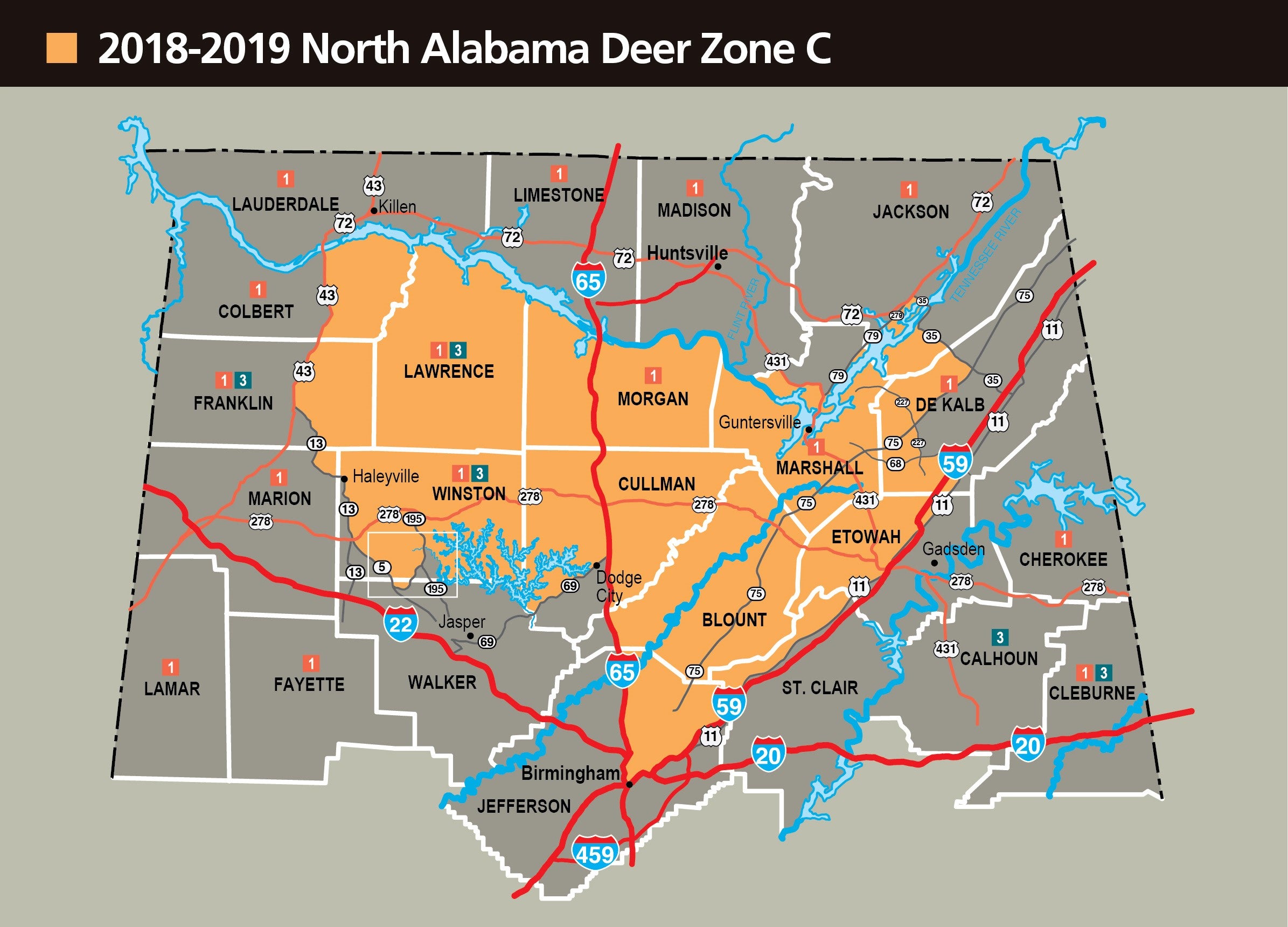By DAVID RAINER, Alabama Department of Conservation and Natural Resources
As expected, the focus of the first Alabama Conservation Advisory Board meeting of the year was the increased awareness and efforts to keep chronic wasting disease (CWD) out of Alabama.
CWD, a disease that affects members of the cervid family of animals (deer, elk, moose, caribou, etc.), was recently confirmed in west-central Mississippi. Previously, the closest state with CWD was Arkansas.
The diagnosis of the deer in Mississippi made it the 25th state with the disease. Alabama quickly added its neighboring state to the list where restrictions are in place on the importation of whole carcasses or carcass parts from cervids. Those restrictions state that any member of the cervid family harvested in those CWD-positive areas must be properly processed before it can be legally brought into Alabama. Parts that may be legally imported include completely deboned meat, cleaned skull plates with attached antlers with no visible brain or spinal cord tissue present, upper canine teeth with no root structure or other soft tissue present and finished taxidermy products or tanned hides.
Chuck Sykes, Director of the Alabama Wildlife and Freshwater Fisheries Division, asked the Conservation Advisory Board at the Montgomery meeting to extend those cervid importation restrictions to all 50 states, territories or possessions of the United States and foreign countries. The Board passed a motion to extend the restrictions.
“Mississippi became positive during their deer season, and we had to immediately close the border to import of whole Mississippi deer because they were a CWD positive state,” Sykes said. “We don’t know where the next one is going to pop up. Yes, it is an inconvenience, but it pales in comparison to the inconvenience we will all have if CWD gets here.”
Sykes said WFF has tested about 500 deer annually for CWD since 2002 and has now partnered with the Department of Agriculture and Industries to have testing capabilities in Alabama. WFF purchased the testing equipment, and Agriculture and Industries will train technicians to conduct the tests.
“We’re trying to do everything we can to inform people of the danger,” Sykes said. “We don’t want you to panic, but we want you to understand this is a serious issue.
“We know the highest risk of the disease coming here is by someone moving live deer or someone moving a hunter-killed deer into the state without properly taking care of it.”
Alabama recently prosecuted a pair of Alabama residents for importing live deer, which has been prohibited since 1973, from Indiana. The pair was charged with numerous counts, including federal Lacey Act charges. The judge fined the breeders $750,000, voided their deer breeders license and confiscated all the breeders’ deer.
“We’re dealing with a handful of individuals that could mess it up for everybody, so we want y’all to be vigilant in watching,” Sykes said. “Let us know if you see something that is not right. Please help us with the resource we’re trying to manage.”
Alabama has more than 200 licensed deer breeders. Those breeders are required to test every animal 12 months old or older that dies in the facilities. Sykes said more than 300 captive deer are tested annually. WFF recently changed the regulations to require the deer breeders to maintain an online database of animals.
Sykes said a great deal of misinformation about CWD has been disseminated, mainly through social media.
“Probably the biggest one is the lack of differentiation between EHD (epizootic hemorrhagic disease) and CWD,” he said. “EHD, we’ve always had. It hit north Alabama pretty hard this year. We have outbreaks every year. Most of them are not severe. Epizootic hemorrhagic disease and related bluetongue viruses are transmitted by midges. They bite one deer and then transmit it to the next deer. It’s endemic to Alabama and most of the Southeast. It hits the northern states harder than us. You typically see these outbreaks in late summer and early fall. It is not always fatal. That’s a big difference. This is something that’s not going to wipe out our deer herd.
“Now chronic wasting disease, on the other hand, is caused by a prion, a misfolded protein, not a virus. It’s similar to CJD (Creutzfeldt-Jakob disease) in humans, scrapie in sheep and BSE, or mad cow disease, in cattle. It is infectious, communicable and always fatal.”
Sykes said CWD is not endemic to the South, but once it shows up, it doesn’t go away. He said no successful methods have been developed to sanitize the soil, the environment or facilities.
“This is serious,” he said. “This is not made up. This is a real issue. It was first found in captive mule deer in Colorado. The CDC (Centers for Disease Control) changed their recommendation last year. They recommend that hunters strongly consider having those animals tested if it was killed in one of the CWD zones before they eat it. Mississippi’s Department of Health just put out an advisory to hunters for this. Now there are processors with meat stacked to the roof because people won’t come get their deer meat.







